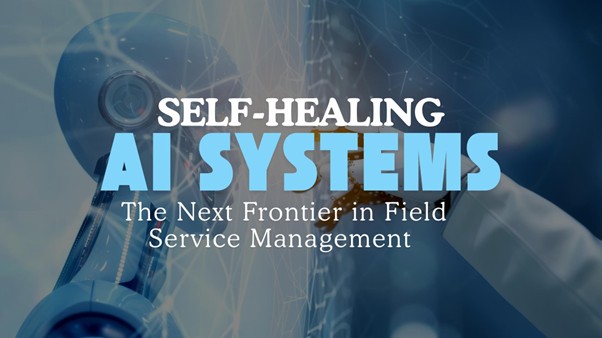Predictive vs. Prescriptive Analytics: What’s Best for Field Service Management?

Uncover How Smart Analytics Drive Smarter Decisions in Field Service with Predictive Maintenance AI!
Modern service ecosystems value data, which represents their most important resource. Businesses that leverage predictive maintenance AI and prescriptive analytics in field service decrease downtime, enhance customer satisfaction, and reduce operational costs. But which service should your team chase?
Predictive and prescriptive analytics transform field service management by enabling proactive decisions and optimal resource allocation. This blog compares both technologies while emphasizing their benefits, differences, and applications to assist you in selecting your perfect operational solution.
When combined effectively, the analysis tools display fundamental distinctions to produce superior field service solutions.
Key Takeaways…
- Difference between predictive and prescriptive analytics
- Real-world field service use cases
- Benefits of predictive maintenance AI
- Role of prescriptive analytics in decision-making
- Best practices for analytics-driven service operations
Predictive Analytics: Anticipating Issues Before They Occur
What is Predictive Analytics?
Predictive analytics uses AI and ML algorithms and historical data to predict potential equipment failures or service disruptions before they occur. Through advanced prediction methods, organizations can forecast future problems, prevent outages, and maintain operational continuity in field-based service operations.
Applications in Field Service:
- Predictive maintenance AI detects wear-and-tear patterns
- Helps in scheduling timely repairs or part replacements
- Reduces unscheduled downtime and service delays
Benefits:
- Organizations can identify problems early through predictive analytics, minimizing their development into costly major issues.
- It enables higher equipment operational time through early fault detection, avoiding unplanned breakdowns.
- It enables effective resource management because teams can organize tasks using data-driven analytics.
Example Table: Predictive Maintenance AI in Action
Feature | Traditional Maintenance | Predictive Maintenance AI |
Maintenance Schedule | Fixed intervals | Data-driven, real-time alerts |
Downtime | Frequent | Reduced significantly |
Cost Efficiency | Low | High |
Customer Satisfaction | Moderate | High |
Prescriptive Analytics: What Should Be Done Next?
What is Prescriptive Analytics?
Prescriptive analytics goes beyond predicting future events by recommending the best action based on available data. It uses advanced optimization models and simulation engines to evaluate various decision-making scenarios. This helps organizations choose the most effective strategies to improve performance and meet service goals efficiently.
Applications in Field Service:
- Dynamic workforce scheduling and routing
- Suggests inventory adjustments
- Recommends service-level changes to meet SLAs
Key Benefits:
- Prescriptive analytics allows robust, data-driven decision-making by evaluating possible outcomes.
- It allows scenario analysis, helping teams prepare for various service conditions.
- It enhances customer service levels through optimized scheduling and resource use.
Use Case Highlight: The company introduced AI-based resource distribution systems, which minimized operation costs by 15% while maintaining outstanding service standards. – Telefónica (Source)
Predictive vs. Prescriptive Analytics: Key Differences
Selecting your field service strategy requires knowledge about the distinct features of predictive and prescriptive analytics.
Feature | Predictive Analytics | Prescriptive Analytics |
Core Function | Forecast future events | Recommend future actions |
Tech Backbone | AI/ML, statistical models | Optimization engines, AI |
Decision Support | When will it fail? | What’s the best decision to take? |
Relevance in Field Service | Preventive maintenance, forecasting | Route optimization, SLA management |
While both approaches use data to drive decisions, predictive analytics focuses on foresight, whereas prescriptive analytics offers actionable guidance—together, they create a powerful combination for service excellence.
How Does FieldEZ Enhance Field Service Using Smart Analytics?
FieldEZ’s Edge in Predictive Maintenance AI:
- Real-time telemetry and condition-based alerts
- AI-powered maintenance forecasting
- Integration with IoT cloud data for smarter insights
Prescriptive Analytics in Field Service – FieldEZ Capabilities:
- Smart task assignments using technician skill-matching
- Route optimization using live traffic data
- Schedule optimization
- Inventory decision support integrated with CRM
How Analytics Reduce Field Service Costs?
Integrating predictive maintenance AI and prescriptive analytics in field service operations significantly enhances efficiency and reduces overall operational costs. Let’s analyze a real-world example that demonstrates the impact of predictive and prescriptive analytics in field service management for a more grounded perspective:
Predictive Maintenance Reducing Equipment Failures:
According to research, predictive maintenance approaches have shown an ability to decrease equipment failures by 40%. Proactive organization practices enable them to handle potential system issues in advance, thus promoting both increased operational time for equipment and minimal maintenance expenses. (Source)
Choosing the Right Analytics Approach for Your Business
Choosing between predictive maintenance AI and prescriptive analytics in field service depends on your current operational maturity, business goals, and technological readiness.
When to Use Predictive Analytics:
- You want to reduce equipment downtime and avoid unexpected failures
- Your business needs real-time alerts for proactive servicing and better scheduling
- You aim to minimize operational costs through AI-driven maintenance forecasts
- You’re beginning to digitize your service workflows and need foundational data models
When to Use Prescriptive Analytics:
- You need dynamic workforce management to handle high job volumes
- You’re optimizing logistics or multi-level service strategies that require decision automation
- You’re scaling operations with a data-first strategy and want AI-powered recommendations
- You have existing predictive models but want to move towards real-time optimization
Best Practice Tips:
- Start with predictive insights to build a reliable historical data layer that uncovers failure trends
- Gradually implement prescriptive solutions once you have enough actionable data for optimization models
- Integrate both approaches for end-to-end visibility and smart decision-making across your service operations
- Partner with an expert like FieldEZ, which offers purpose-built solutions to support scalable analytics architecture
- Ensure regular training and alignment between tech teams and field staff for successful analytics adoption
Both predictive and prescriptive analytics play vital roles in modern field service management. Combining them helps businesses move from reactive to proactive, and finally to autonomous operations, delivering better customer experiences and long-term cost savings.
Conclusion!
The combination of predictive maintenance AI and field service prescriptive analytics is vital and should work together in current field service operations. The predictive tool shows possibilities, but prescriptive analytics provides directions for addressing situations.
Through FieldEZ, businesses can unite these service delivery methods to achieve reliable services while lowering costs and improving customer results. Are you ready to take the next step in your analytics journey? Contact FieldEZ to explore customized solutions today.
Frequently Asked Questions (FAQs)
1. What is predictive maintenance AI in field service?
Predictive maintenance AI leverages ML and data analytics to detect potential issues before they lead to equipment failure.
2. How does prescriptive analytics improve service delivery?
Predictive analysis evaluates many data points to generate superior recommendations supporting quick and intelligent decisions.
3. Can both predictive and prescriptive analytics be used together?
Yes. Both predictive and prescriptive analysis are most effective when integrated. Predictive analytics identifies problems, while prescriptive analytics offers solutions.
4. Is FieldEZ suitable for small and mid-sized field service teams?
Absolutely. FieldEZ provides its analytics solutions with flexible features that adapt to your business expansion needs.
5. What kind of ROI can I expect from using analytics in field service?
Businesses achieve measurable ROI through shorter downtimes, higher operational efficiency, and satisfied customers within months.



